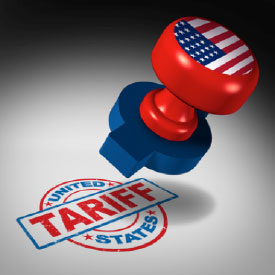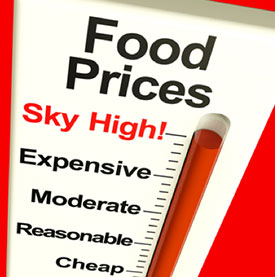The Emerging Threat Of Ferocious Ag-Flation
Most Americans take food abundance for granted. Grocery store shelves are always stocked, and America’s agricultural sector always grows more than enough corn, wheat, and soybean crops to keep the food production system humming along smoothly.
That all could change as abruptly as the weather. In fact, historically wet conditions throughout the Midwest have put this year’s spring planting in jeopardy.
As reported by Minnesota Public Radio, “Corn is being planted at the slowest pace ever, while soybean seeding is the slowest since 1996. And with the start of June looming, many farmers are facing a tough choice — do they even try to get crops in the ground at all?”
For farmers and ranchers across the heartland, it’s a financial crisis akin to a Great Depression. U.S. farm income is down 45% since 2013.
Farm Bailouts Could Bring Unintended Consequences
President Donald Trump recently announced a $16 billion bailout for farmers hurt by tariffs.

 It won’t help all farmers, though, and it won’t be enough to compensate for a host of other misfortunes to befall the agricultural sector – from flooded farmlands to low futures prices.
It won’t help all farmers, though, and it won’t be enough to compensate for a host of other misfortunes to befall the agricultural sector – from flooded farmlands to low futures prices.
Some economists fear the new wave of government subsidies could incentivize farmers to plant soybeans instead of other crops the market demands. As always, political interventions create unintended market distortions.
Republican Senator Ron Johnson warns, “This is becoming more and more like a Soviet type of economy here: commissars deciding who’s going to be granted waivers, commissars in the administration figuring out how they’re going to sprinkle around benefits.”
Economic analyst Michael Snyder notes, in addition to America’s unfolding farming calamity, a recent plunge in Australian wheat production and the spread of African swine flu to pigs in China. He concludes, “We have never seen so many massive threats hit the global food supply simultaneously.”
Consumers Should Brace for Higher Grocery Bills
What does this all mean for consumers? Likely higher prices for pork bellies, corn flakes, and more. And possibly even shortages of some foodstuffs. There is surprisingly little margin for error in the “just in time” inventory system that ultimately puts food on the shelves.
One obvious way to protect yourself from agricultural inflation and a food supply crunch is to stock up on non-perishable and long-lasting food essentials.
For example, oats and other whole grains, if stored properly, can last years or even decades.

 Having a few months’ worth of canned foods and survival foods such as Meals Ready to Eat (MREs) will improve your family’s food security and make you more resilient to emergency situations. Find all the best options at Survival-Goods.com.
Having a few months’ worth of canned foods and survival foods such as Meals Ready to Eat (MREs) will improve your family’s food security and make you more resilient to emergency situations. Find all the best options at Survival-Goods.com.
Even if you never actually need to draw upon your food stocks in an emergency, and even if you don’t have a large family to feed, getting in the habit of buying in bulk still makes financial sense.
This goes for all household products that you consume over time. You save money on a per unit of product basis and stay a step ahead of consumer prices increases.
Stocking up on essentials is the most basic and practical ag-flation hedge. You’ll need to periodically consume your stocks and rotate in new stocks. Bear in mind, you don’t want to go overboard and buy excessive quantities of products that will sit unused past their recommended shelf lives.
Precious Metals Provide Eternal Value with No Expiration Date
When you have adequate food and household product reserves built up, it’s time to look into other ways to hedge against inflation and financial emergencies.
Physical precious metals are an essential inflation hedge and the ultimate form of money when all else fails – the economy, the banking system, or the U.S. dollar itself. Fortunately, gold and silver have infinite shelf lives. And they don’t take up much shelf space compared to groceries!
That said, we do recognize that you can’t survive solely on gold and silver coins. In an emergency, you may be able to use them to barter for things you need.
But that’s not the same as having immediate access to the things you need.
So before you stock up on hard money, make sure you are also stocked up on food, water, household, and emergency essentials. Being both well prepared and resistant to increases in consumer price inflation is a win-win.



